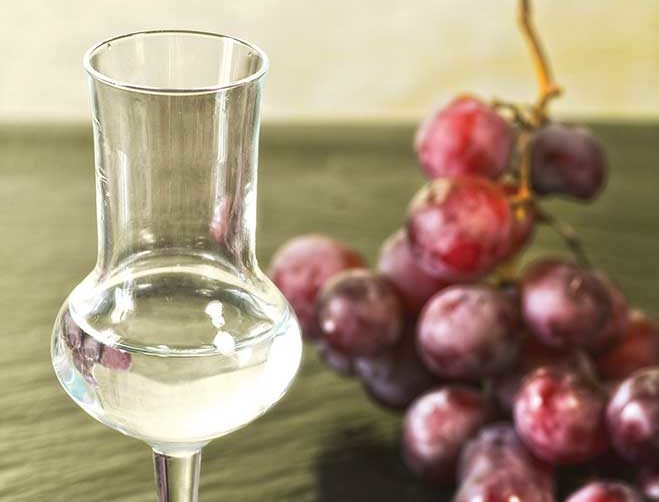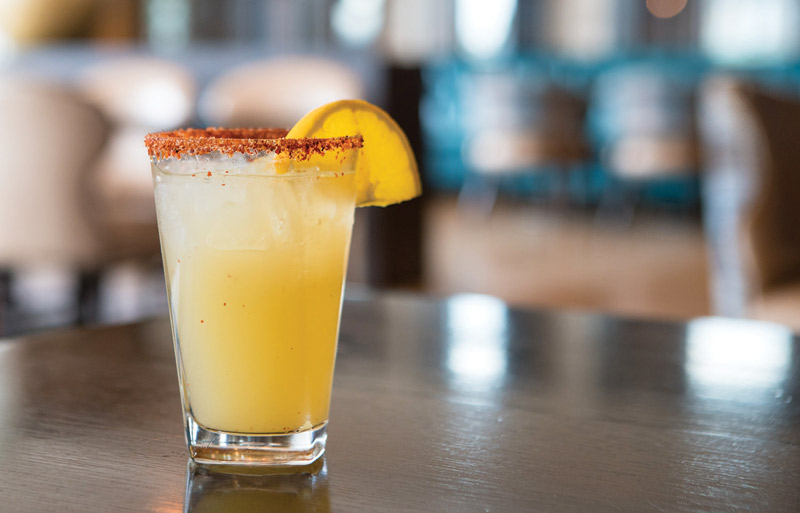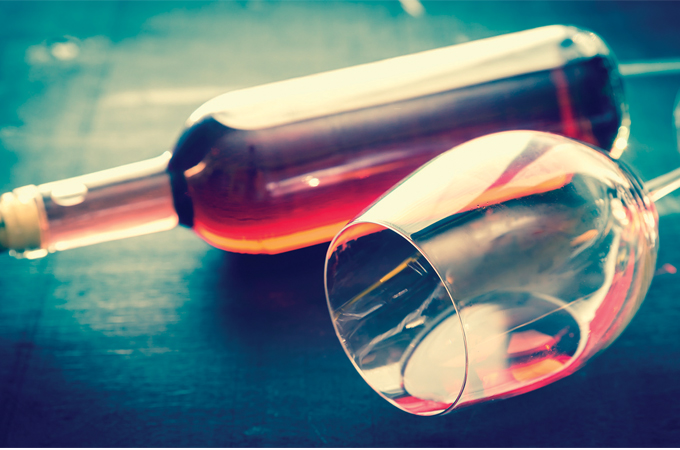Grappa is a grape-based Italian pomace brandy that must contain 35 to 60 percent alcohol by volume. It is produced by fermenting and distilling the leftover grape solids after pressing for wine-making and can contain seeds, stems, skins and pulp, depending on the winemaker. Like wine, grappa comes in different styles and flavor profiles depending on the grape quality and varietal used.
labels count!
Mass-produced bottlings have given this spirit a bad name, with a harshness on the palate and throat that is more akin to rubbing alcohol, turpentine or gasoline than a fine brandy! The best ones are produced by great winemakers or houses that solely produce grappa.
the color spectrum
Most grappa is clear, but in recent years, amber or yellow woodaged or reserve grappa has entered the market. Oak casks are most commonly used; however, when other woods are part of the process—cherry, acacia, chestnut or ash—they impart their own flavors to the pomace spirit.
added interest
Grappa is categorized in four distinctive taste profile categories: young, aged or barricata, aromatic and aromatized. Young grappa is quickly distilled and bottled shortly after. Aged grappa is stored and aged for a period of time in wood casks. The aromatic style is produced from aromatic grape varietals such as Riesling, Moscato or Gewürztraminer. At the end of distillation, botanicals can be added to the spirit such as fruits or herbs to impart flavor, color and aroma.
an elegant end
A fine grappa, much like cognac, is a fantastic way to finish any meal. Nonino Grappa is solely dedicated to grappa production and produces great single varietal white as well as aged grappa. Try its Moscato, Merlot or Amarone expressions, as well as the Antica Cuvee Reserve. Gaja is an iconic wine producer that makes grappa from the pomace of its world-class wines. The white grappa from the Cabernet Sauvignon single vineyard of Darmagi is heavenly, as is the aged grappa crafted with Nebbiolo grapes from the Sperss vineyard in Barolo, Italy.
grappa cocktails
grappa libre: Replace the rum in a Cuba Libre with a wood-aged grappa or grappa reserve: 2 oz. aged grappa, cola and a squeeze of lime.
moschito: Replace the rum in a mojito with white grappa. In a highball glass muddle fresh mint, two lime wedges and simple syrup. Top with crushed ice and a shot of white or aromatic grappa. Top off with soda water or Pellegrino, and garnish with a lime wedge and a sprig of mint.
sanguea, my Italian version of sangria: Macerate 3 c. of sliced blood orange, lime, apple, berries and apricots with 1 c. sugar and 1 c. grappa for three days, covered in the refrigerator. Before serving, combine with 1 bottle of Sangue di Giuda, a sweet, sparkling red wine from Oltrepò Pavese (Lambrusco is a good substitute).
Jeffrey Hall is the sommelier for The Four Seasons Hotel-St. Louis.








